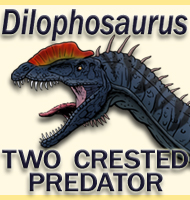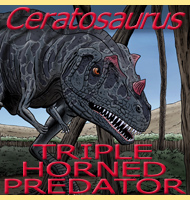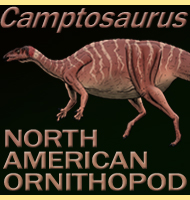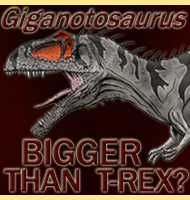


Wiehenvenator

Name:
Wiehenvenator
(Wiehengebirge hunter).
Phonetic: Wy-hen-ven-ah-tor.
Named By: Oliver W. M. Rauhut, Tom R.
H�bner & Klaus-Peter Lanser - 2016.
Classification: Chordata, Reptilia, Dinosauria,
Saurishcia, Theropoda, Megalosauridae, Megalosaurinae.
Species: W. albati (type).
Diet: Carnivore.
Size: Roughly estimated to be between 8 and 9
meters in length.
Known locations: Germany, Westphalia -
Ornatenton Formation.
Time period: Callovian of the Jurassic.
Fossil representation: Partial skull and post
cranial skeletal remains of a sub adult.
Fossils
of Wiehenvenator were first discovered in 1998
around the Wiehen
Hills in Germany. When compared to some other theropod dinosaurs such
as Allosaurus,
these fossils were noted as being of a potentially
huge size which led to estimates of up to fifteen metres in length
being recorded in popular media for many years afterward. However as
is often the case when people are more concerned with selling a
headline, most of these reports were gross overestimates.
These
fossils got a fresh description in 2016 which saw them identified
as a new genus called Wiehenvenator. This
description came to
establish Wiehenvenator as a megalosaurid
theropod dinosaur (relative
of Megalosaurus),
with comparisons to genera such as Torvosaurus
resulting in estimates of around eight to nine meters in length. The
holotype individual of Wiehenvenator is also noted
as being a subadult
that was at least ten years old when it died, which means that fully
grown adults may have been a little bit larger.
Further reading
- A new megalosaurid theropod dinosaur from the late Middle Jurassic
(Callovian) of north-western Germany: Implications for theropod
evolution and faunal turnover in the Jurassic. - Palaeontologia
Electronica 19.2.26A: 1-65. - Oliver W. M. Rauhut, Tom
R. H�bner & Klaus-Peter Lanser - 2016.
----------------------------------------------------------------------------
Random favourites
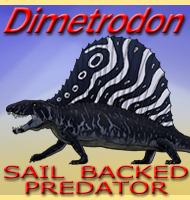 |
 |
 |
 |
